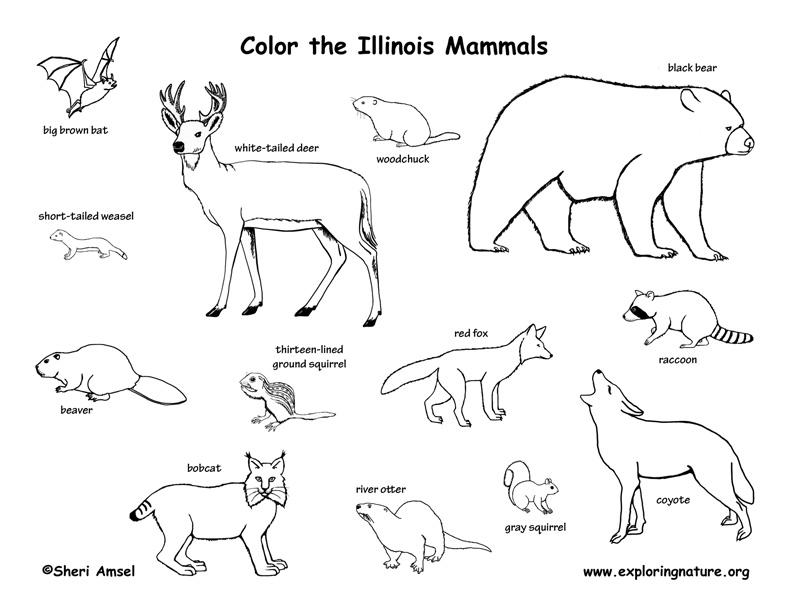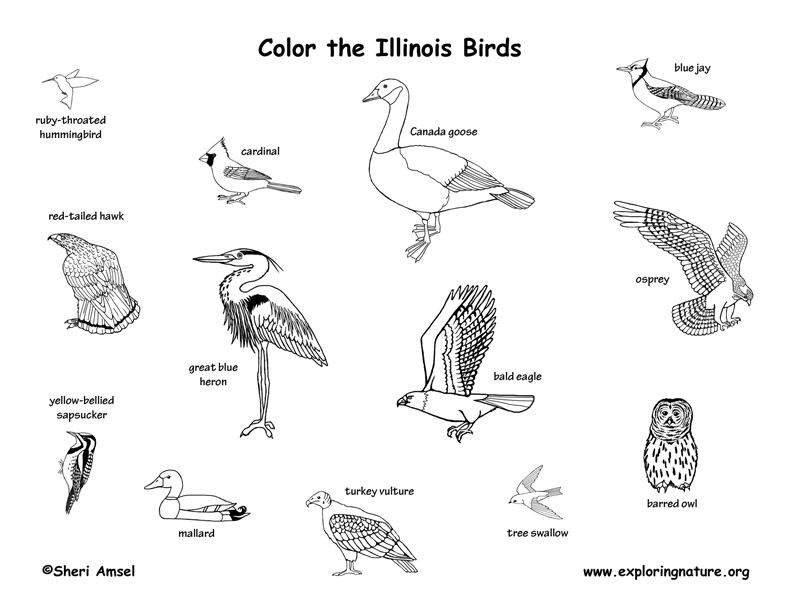

Grasslands
Historically, more than half of Illinois was tallgrass prairie. The grass - big bluestem and Indian grass among others – reached 10-feet-tall in places.
Forest
Only 15% of Illinois is forested (about 4.4 million acres), but 97% of those forests are hardwood with maple, black walnut, oak, ash, hickory and others. Illinois has more 250 species of trees in its forests. More than half of Illinois's forests are Oak-Hickory. A fifth of its forests are Elm-Ash-Cottonwood and another fifth are Maple-Beech. The remaining are conifer and mixed forests. The most common tree species in Illinois is the slippery elm. The biggest tree in Illinois is thought to be a sycamore that is 119 feet tall and 31-feet around. The tallest tree is a 150-foot+ red oak, while the thickest trunk is a bald cypress that measures 34.3 feet around.
Wetlands
Until recently, wetlands were thought to be of no use to man. Wet and buggy, they were considered wasted land. Developers drained them, filled them in with tons of soil and built houses, businesses, roads and parking areas on them. Now we know that wetlands are actually very important natural communities. They provide valuable wildlife habitat, stabilize shorelines and protect the land from storm surges and flooding. They act as filters for pollutants that run off the land from farms, towns and cities. Every state has some history of wetland destruction.
Illinois has lost over 90% of its native wetlands and of the wetlands still left in the state, 25% of are man-made. More than half of Illinois's natural wetlands (not man-made) are found in southern Illinois and of those, most are near portions of the Big Muddy River, Kaskaskia River, Little Wabash River, and Mississippi River.
Almost 94% of Illinois's wetlands are freshwater wetlands (also called palustrine) like marshes, swamps, bogs and fens. Half of those are found in southern Illinois partly as large cypress swamps along the Cache River. A small proportion if Illinois's wetlands (4%) are near or around lakes. These are called lacustrine wetlands. The rest (about 2%) are called riverine wetlands and they are so very because of development along Illinois's waterways.
Swamps differ from marshes and bogs in that they have woody-stemmed pants - trees. Marshes have mostly soft-stemmed plants like cattails, sedges and rushes. Illinois's swamps are the northernmost sections of a great swamp that historically covered much of the southern U.S. This swamp is almost always under water and with a lot of tree cover. Some of the bald cypress in these swamps are more than 1,000 years old. Silver maple, sycamore, and cottonwood trees are also found in these swamps.
Illinois's marshes are very rich habitats providing food, shelter and breeding grounds for fish, birds, and other wildlife. They are found around lakes and ponds or in the floodplain of rivers and streams.
Illinois's bogs formed after the glaciers retreated leaving bowls behind. These are found only in the northeast corner of Illinois. The dominant plant is sphagnum moss, though there can be shrubs and even small trees. The soil is so acidic and the soil nutrients are so low that bogs have fewer species than other wetlands.
Fens are meadows kept wet by a spring. As opposed to bogs, a fen is often alkaline, but the result is similar – they have a lower plant diversity. Wet meadows are the one wetland type that was regularly destroyed for farmland, so there are very few fens left in Illinois.
Amphibians
Reptiles
To look up individual birds go to the Exploring Nature Birds Database.
When you research information you must cite the reference. Citing for websites is different from citing from books, magazines and periodicals. The style of citing shown here is from the MLA Style Citations (Modern Language Association).
When citing a WEBSITE the general format is as follows.
Author Last Name, First Name(s). "Title: Subtitle of Part of Web Page, if appropriate." Title: Subtitle: Section of Page if appropriate. Sponsoring/Publishing Agency, If Given. Additional significant descriptive information. Date of Electronic Publication or other Date, such as Last Updated. Day Month Year of access < URL >.
Amsel, Sheri. "Illinois Habitats, Mammals, Birds, Amphibians, Reptiles" Exploring Nature Educational Resource ©2005-2024. December 13, 2024
< http://www.exploringnature.org/db/view/Illinois-Habitats-Mammals-Birds-Amphibians-Reptiles >








